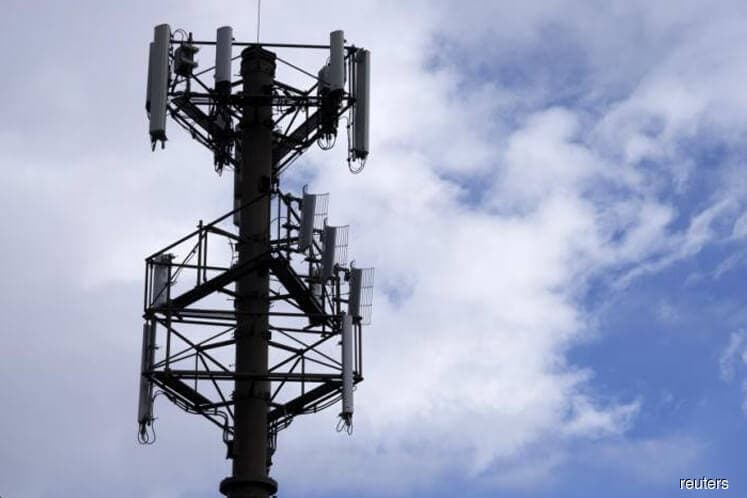
This article first appeared in The Edge Financial Daily on January 17, 2018
Telecommunications sector
Maintain market weight: We expect 2018 service revenue to grow 2%, while telecommunications companies (telcos) focus on cost efficiency to grow earnings before interest, taxes, depreciation and amortisation (Ebitda).
Key events include: i) 700MHz spectrum reallocation, and ii) potential market consolidation as Telekom Malaysia Bhd (TM) and Axiata Group Bhd encroach into the fixed/wireless space. Additionally, U Mobile Sdn Bhd may be up for sale with more than a 10% subscriber market share.
Key trends in 2018 include: i) 2018 service revenue growth of 2% versus declines of 1.5% and 1.6% for 2016 and 2017, ii) more focus on cost optimisation efforts to grow Ebitda, and iii) capital expenditure (capex) to remain elevated due to spectrum-related upfront costs for 700MHz.
Separately, we expect competitive pressure in the international direct dialling (IDD) segment to abate as telcos focus on growing service revenue in the Malaysian prepaid segment. The strengthening of the ringgit will also help alleviate cost pressure within the prepaid segment where DiGi.Com Bhd is expected to experience more pronounced positive cost savings given its high prepaid base.
DiGi aims to achieve a 1 to 3 percentage-point cost reduction over 2017 to 2018, while Axiata aims to see RM2.3 billion cost savings in 2017 to 2019. We believe these will have a positive spillover effect into 2018 as we expect the sector’s core net profit to grow 7% year-on-year (y-o-y) to RM5.789 billion (in 2018) from the low base of RM5.417 billion in 2017.
Malaysia had a rational four-player telco market right up to 2016, when U Mobile started to become more aggressive with unlimited data plans, while TM’s webe entered as the fifth mobile player.
Irrational competition has abated in the past nine months as players are back to focusing on quality subscribers and sustaining Ebitda (versus growing service revenue at the expense of high subscriber acquisition cost).
We also note abating competitive pressure within the IDD migrant segment as DiGi has shifted its focus to growing the Malaysian post-paid segment. Additionally, U Mobile and webe appear to be focusing on rolling out networks with stable and competitive product offerings.
Against a backdrop of lofty valuations and pedestrian earnings in the near term, we maintain our “market weight” stance on Malaysian telecommunications. We expect modest outperformance in the second half of 2018 (2H18) due to dissipating risk appetite. This will drive interest for dividend yielding stocks, specifically DiGi with its 4% sustainable dividend yield. The sector currently trades at 26 times 2018 forecast price-earnings ratio (versus the sector’s mean of 21 times) and 10 times enterprise value/Ebitda.
We believe DiGi’s removal from the syariah list will be an overhang on DiGi’s near-term share price performance. The potential reinstatement of DiGi into the syariah list could be in November 2018, as the April 2018 assessment will continue to utilise the latest annual audited accounts (which is Dec 31, 2016) to determine the syariah list.
That said, further downside from hereon would likely be cushioned by its attractive dividend yield of 4.3% for 2018. The strength of the ringgit will also help to alleviate cost pressure for the group into 2H18.
OCK (target price [TP]: RM1.05). We like the company’s earnings quality as the group focuses on long-term recurring income via its tower company (towerco) business. Earnings growth will be driven by its towerco businesses in Myanmar and Vietnam. We estimate recurring income would grow to account for 50% of 2018 group revenue (2016: 2%).
Our TP implies a 17% upside from the current share price level. We see a significant earnings upside from: i) further brownfield towerco acquisitions in Southeast Asia, and ii) a rising tenancy ratio in Myanmar. Our TP of RM1.05 is based on sum-of-parts with the tower segment valued based on the discounted cash flow of existing long-term contracts with telco operators.
Sector catalysts
We opine that market consolidation remains a possibility for the sector. While talk of a potential merger between Axiata and TM has dissipated, a synergistic consolidation of TM and Celcom may continue to fuel talk of consolidation.
Additionally, our channel checks suggest that U Mobile may be up for sale, as opposed to our initial expectation of a listing exercise. U Mobile currently has more than a 10% subscriber market share. In the interest of market consolidation, the likes of Maxis, DiGi or Celcom may be interested in U Mobile, which has become Ebitda-positive.
Assumption changes
Roll over valuation window to 2019. We are taking this opportunity to roll over our valuation window from 2018 to 2019. That said, we continue to value Malaysia telcos on a discounted cash flow basis.
We expect higher service revenues in 2018 to be driven by an increase in smartphone penetration rates (to drive post-paid revenue) and lower prepaid churn (as much of the impact from the illegal immigrant crackdown was felt in 1H17). Anecdotally, Maxis saw a 137% y-o-y rise in data usage (second quarter of 2016 [2Q16]: 3GB per month) as smartphone penetration reached 84% in 2Q17.
As telcos rapidly expand their 4G long-term evolution (LTE) network coverage, 4G LTE leadership is seen as a differentiator for telcos and may help strengthen customer stickiness, especially within the post-paid segment.
We expect Maxis, Celcom and DiGi to actively share both tower and backhaul fibre infrastructure assets.
This will allow the industry more efficient use of capex, lower telcos’ capex spend, improve free cash flow-generation ability and consequently provide for a sustainable return on invested capital. — UOB Kay Hian, Jan 16